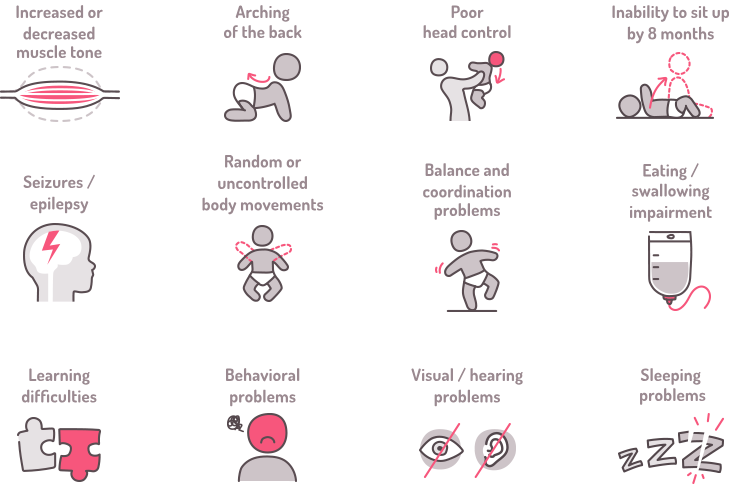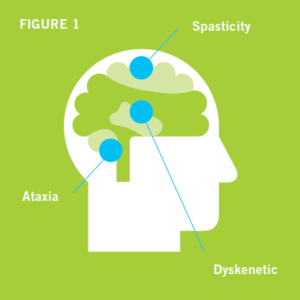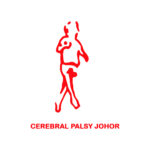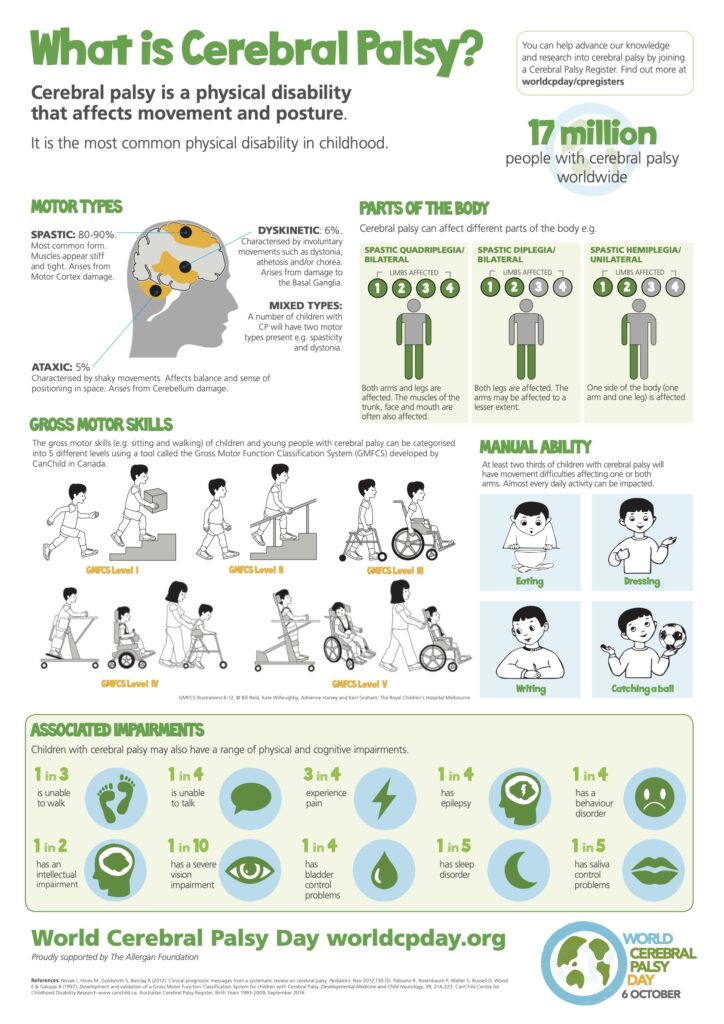Cerebral palsy is a lifelong disorder, affecting movement and posture.
Cerebral palsy describes a group of conditions affecting a developing infant or child’s brain. It is the most common physical disability in childhood.
The condition results from damage to the brain that occurs during pregnancy, at birth, or within the first two years after birth.
Depending on the extent and location of the brain damage, movement and posture is often affected, though these features are often accompanied by other difficulties.
About Cerebral Palsy
The main signs for cerebral palsy are delayed development and difficulties with movement and coordination.
There can be indications at birth that may suggest your child has cerebral palsy, however generally signs become more apparent as your baby develops. Difficulties with movement and coordination are also often noticed by family.

Source: nestlehealthscience.co.uk
Other signs that your child might have cerebral palsy include:
- Low muscle tone; your baby may feel “floppy” when picked up;
- High muscle tone; your baby may feel stiff when being picked up or moved;
- A baby may show jerky or uncoordinated movements;
- A baby may be unable to hold up their head while lying on their tummy or in a supported sitting position;
- A baby may find feeding and swallowing difficult;
- Not rolling by 6 months;
- Delayed development such as not sitting and balancing on their own by 12 months, not walking by 18 months, or not speaking simple sentences by 24 months.
These signs do not necessarily mean your child has cerebral palsy. But if you have concerns, please speak to a doctor and read more about how you can access our services.
Cerebral palsy is caused by either a bleed in the brain (haemorrhage) or lack of oxygen to the brain (anoxia).
Damage to the brain can occur at any point from early in the pregnancy, to months after a child is born. Often multiple factors combine together and create the specific circumstances that lead to a child developing cerebral palsy.
It is not an inherited condition (although it may be influenced by genetics) and cannot be screened for in pregnancy.
As we learn more about cerebral palsy, we realise it is probably more accurate to talk about risk factors than causes of cerebral palsy.
During pregnancy:
- Infections such as rubella, chicken pox, or herpes.
- Preterm birth. Although most children born early (preterm) do not develop cerebral palsy, it is the highest risk factor. Preterm birth is not in itself the cause, but it can be the sequence or combination of events that leads to a preterm birth; or your baby being unwell in the time after they are born.
- Substance abuse.
- Trauma to the baby during pregnancy.
- The mother’s age being either under 20 or over 40 years.
- Traumatic birth.
- Twins or multiple births.
After birth:
- Baby of low birth weight (less than 1.1kg).
- Severe jaundice in a newborn baby.
- Infections affecting the baby just after birth, such as meningitis or encephalitis.
- Trauma in a child before the age of two e.g. head injury, stroke or almost drowning.
A combination of the above factors can further increase the risk of cerebral palsy.
If you or your child fall into one or more of these categories above it does not mean that they have cerebral palsy. However, if you have concerns, please speak to your doctor or read more about how you can access our services.

There are many different classification systems used with children living with cerebral palsy. Some are used to understand the part of the brain that’s damaged and therefore how cerebral palsy may affect a child. This is important in planning therapy that may be helpful.
Others systems are around functional ability levels in certain areas, for example, moving or eating and drinking. These help people to understand a child’s skill levels in those areas.
You will find several of these may be used to help describe your child and their abilities. This is done to help everyone involved with your child to understand your child more fully, decide what treatments are likely to be effective and what help they may need.
Below are some of the commonly used classification systems.
Spastic cerebral palsy
This is the most common form of cerebral palsy. In this type of cerebral palsy, a child’s muscles can be stiff and tight, making it difficult to move and reducing the amount of movement possible. This stiffness is not always apparent at first but becomes more noticeable as children begin to move more. This type of cerebral palsy arises from damage to the motor cortex. Children born prematurely may show this type of cerebral palsy.
Dyskinetic cerebral palsy
This type of cerebral palsy is characterised by involuntary movements. A child’s muscles switch between stiffness and floppiness, causing uncontrolled body movements or spasms. These involuntary movements can get in the way of the child’s planned activities. This type of cerebral palsy is caused by damage to nuclei deep in the brain called the basal ganglia.
Ataxic cerebral palsy
With this type of cerebral palsy, a child has shaky, less coordinated movements. It affects balance, fine motor control and a child’s automatic movement and adjustments to posture. This is caused by damage to the cerebellum near the base of the brain.
Mixed
A mixed presentation may occur if more than one area of a child’s brain is damaged. Then a child may show a combination of the above motor difficulties.
Get Help
How We Can Help
FAQs
There is no cure for cerebral palsy; the damage to the brain is permanent. However, the brain can adapt, and therapy can influence how the brain develops, to make the best possible use of the nervous system remaining. Everyone’s brain has some possibility for adaptation and learning but we know that younger brains are the most adaptable.
The damage to the brain is not progressive, but your child’s difficulties may change as they grow and mature. Limited movement can result in the shortening of muscles and deformities of joints and bones. Growth can also impact movement. This means for some children certain activities such as walking or using their hands, may become more difficult.
As cerebral palsy involves damage to the brain, it can affect many areas of function. For some children, problems may occur either as part of cerebral palsy or secondary to the condition.
This will depend on the extent and location of damage in the brain. For example, immobility can lead to muscle degeneration. Muscle stiffness can also impact on a child’s breathing and respiratory system. Some children have epilepsy and others difficulty with sleep, eating and drinking or communication and others with their sensory system.
Pain is the issue that most affects the quality of life in children who have cerebral palsy. However, please remember that these difficulties do not affect every child.

